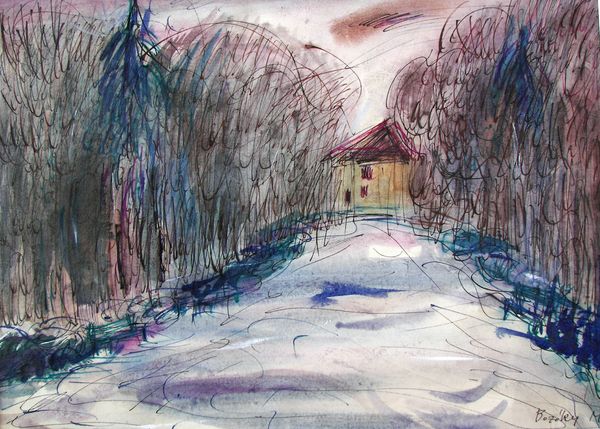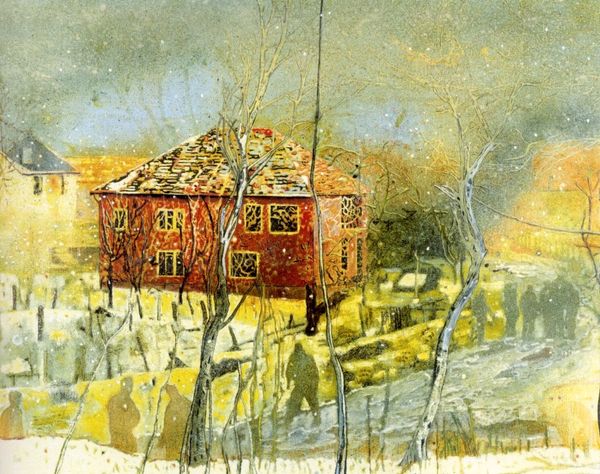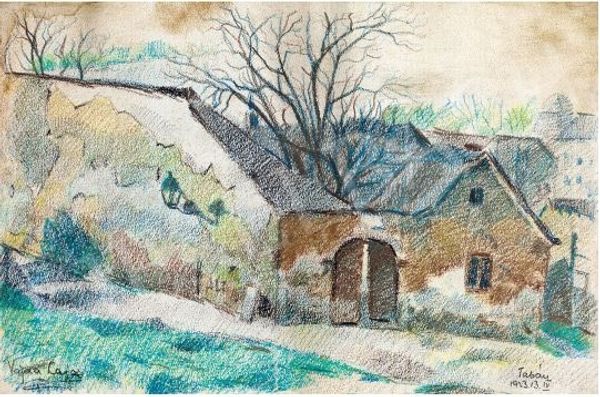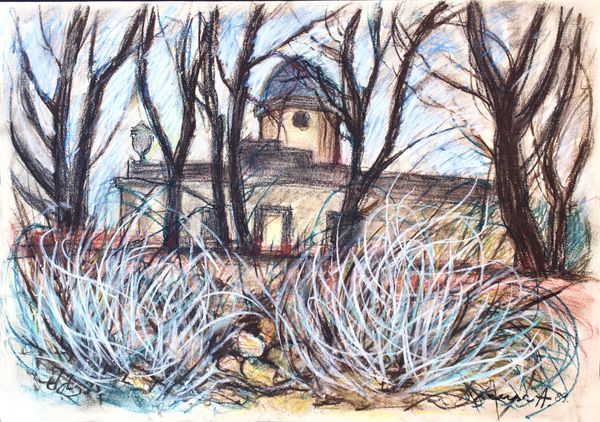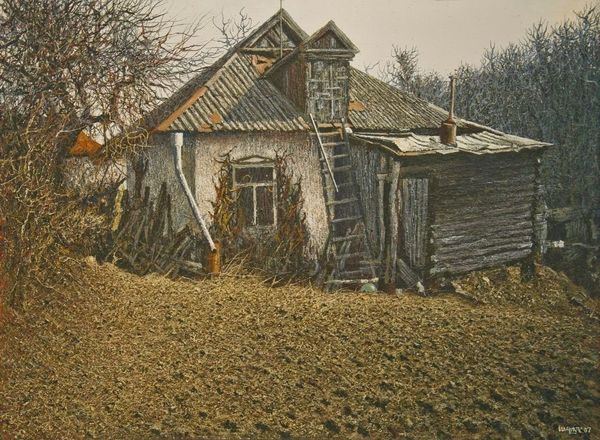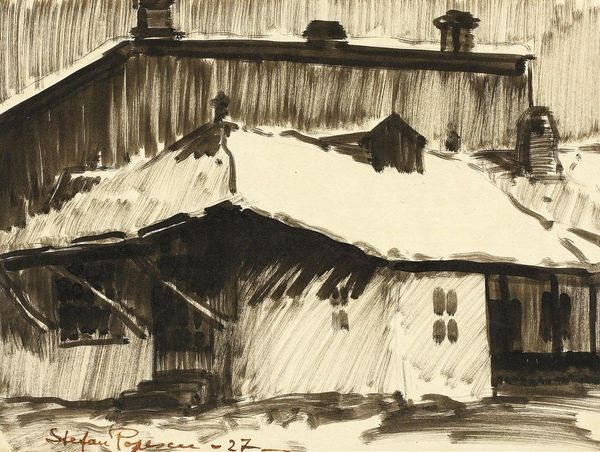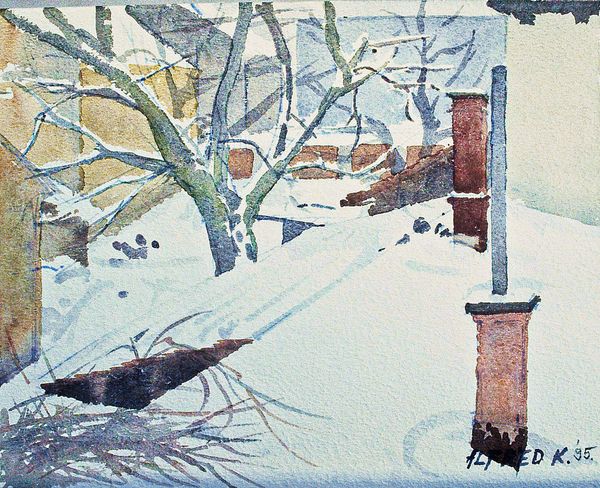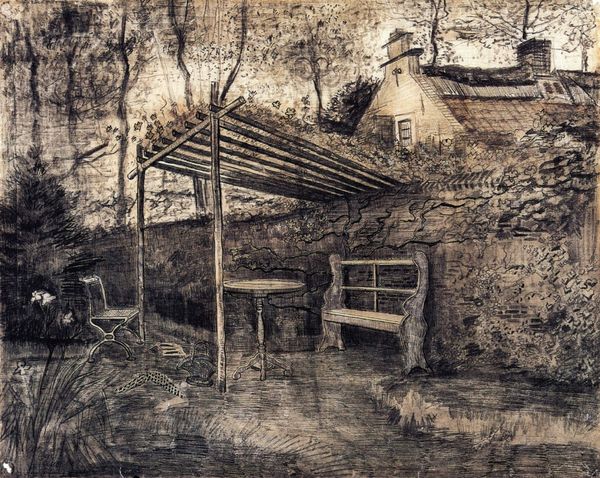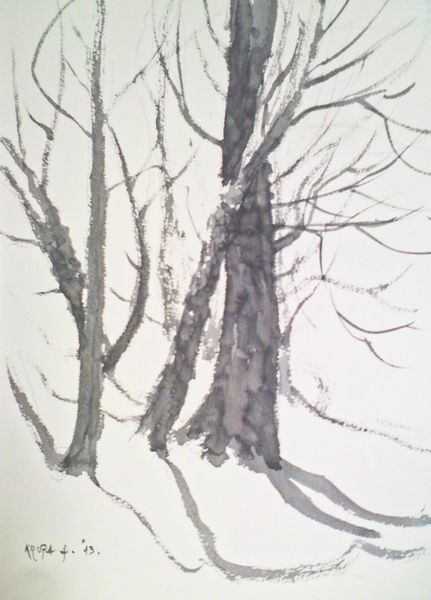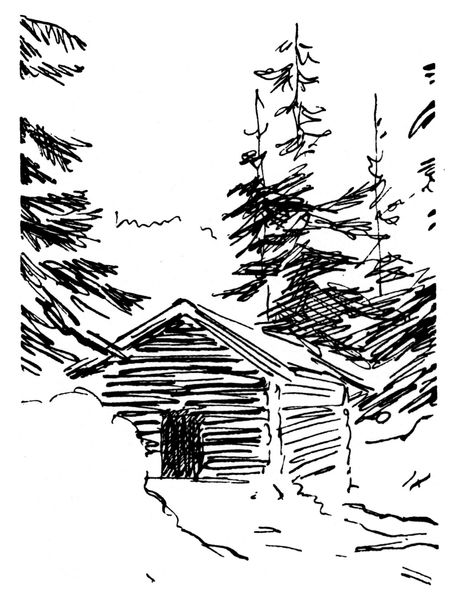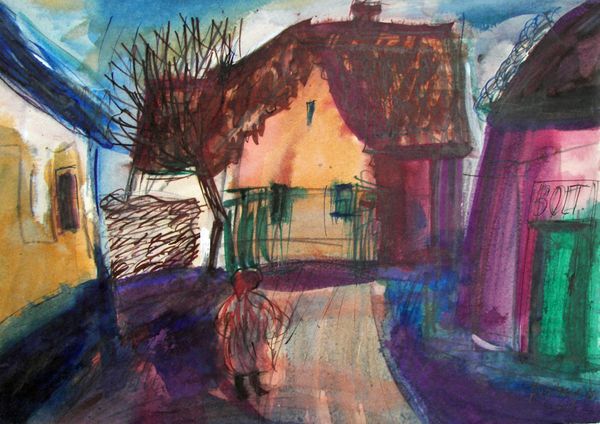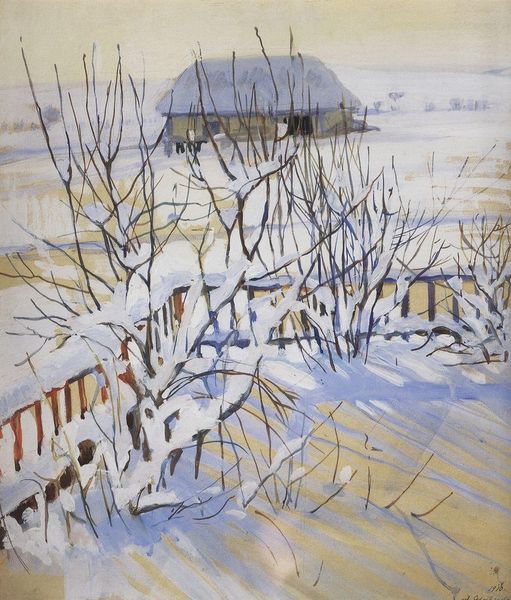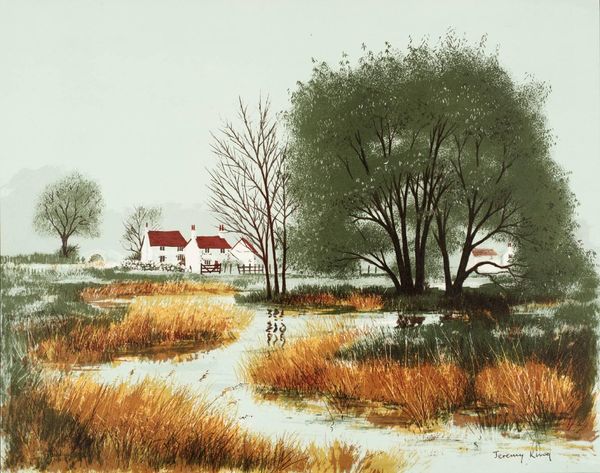
drawing, paper, watercolor
#
tree
#
drawing
#
landscape
#
winter
#
paper
#
handmade artwork painting
#
watercolor
#
watercolor
Dimensions: 24 x 21 cm
Copyright: Creative Commons NonCommercial
Editor: So, here we have Alfred Freddy Krupa’s "Old wooden cottage in the snow," created in 2014, using watercolor and drawing on paper. It definitely evokes a sense of quiet isolation, wouldn't you agree? I’m struck by how the stark lines of the trees contrast with the softer washes of color. What are your initial thoughts on this piece? Curator: Indeed. Immediately I'm thinking about the cultural significance of the rustic, perhaps even derelict, building. Winter landscapes in art have often symbolized hardship or introspection, think about the romantic movement. What is particularly intriguing is the use of watercolor to depict such a harsh environment. It feels almost like a commentary on romanticizing the struggles of rural life. Do you get a sense of romanticizing from the artwork? Editor: I see what you mean. It’s easy to view snow scenes as picturesque, but the rundown cottage brings a sense of reality to the romantic lens, doesn't it? Curator: Exactly. And considering the date, 2014, it makes you think about the continued appeal – and maybe the changing meaning – of such imagery in contemporary society. Rural scenes often serve as emblems of national identity, particularly in times of rapid urbanization and globalization. Who gets to create or disseminate those images is worth considering. How might a photograph of the same scene change the feeling we get from this watercolor piece? Editor: A photo might feel more immediate and objective, losing the subjective touch that watercolor lends, along with the statement Krupa makes with his use of a visual-art media as opposed to photographic techniques. I think I appreciate the quiet narrative of this painting. Curator: Right. So it serves as a reminder that even seemingly simple images can carry complex social and historical weight. Editor: I’ve definitely gained a fresh perspective on winter landscapes now! It's about more than just the pretty snow, there’s so much culture to interpret! Curator: Precisely. The public life of art always demands that we view it through varied lenses, and question what its function has become!
Comments
No comments
Be the first to comment and join the conversation on the ultimate creative platform.
